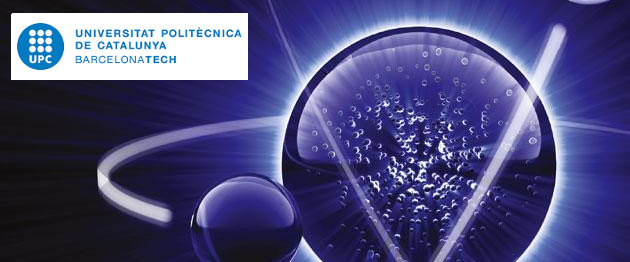
On the 6 May, our group member Xavier Sáez gave an online lecture entitled “Simulation Codes in Fusion Technology” as part of the Fusion Technology Course of the Nuclear Engineering Master organized by the Department of Physics on Barcelona School of Industrial Engineering (ETSEIB) at Universitat Politècnica de Catalunya (UPC), Barcelona, Spain.
This course offers the students an overview on selected key topics in Fusion Technology, delivered by specialist lecturers from F4E, UPC and our Fusion group at Barcelona Supercomputing Center (BSC).
In his lecture, Xavier explained the activities developed by our group, such as FusionCAT project, and introduced the basic principles of computing and, in particular those related to high-performance computing (HPC). Thereafter, he focused on the use of simulation codes to boost the research in the fusion field, for example, in order to design new fusion devices.

The traditional way of doing science or studying any process in nature is to perform experiments that allow to draw conclusions from observations. However, this situation has changed thanks to the appearance of computers that have enabled running simulations and getting answers to research questions for which performing experiments is either too expensive or difficult. In the field of fusion research, this development has reached the point where computational simulations are required in order to accurately understand the plasma behavior within a reactor.
To reach this state of affairs, many plasma codes have been developed. However, most of them are still limited to dealing with idealized configurations or studying a single physics process due to a lack of computing power. At the same time, it is clear that a fusion reactor cannot be modeled by just one single theoretical description due to the complexity of the physical processes involved. Instead, a multi-physics approach is required to capture all relevant phenomena to model and simulate complex systems such as a complete plasma discharge inside a fusion reactor. Such multiphysics problems face different physical time scales, different numerical formulations, performance issues, as well as numerical and physical instabilities.
Multiphysics simulations are becoming one of the main challenges to model new fusion reactors like ITER since they require so much computing time due to the high amount of implied calculations required to get precise simulations that it is not possible to carry them out in a reasonable time with a workstation. This is the main reason why High Performance Computing (HPC) plays an essential role in such multi-physics simulations. Our group’s purpose is to connect the latest advances in HPC with fusion scientists to port their codes to HPC platforms in an efficient way. Some examples of well-known codes where we have collaborated are EUTERPE (Germany), JOREK (France), ASCOT (Findland), ALYA (Spain) or PION (UK).
Another important initiative in the field is the EUROfusion Work Package Code Development where our group is participating to develop an integrated modeling suite where a set of computing codes are coupled to simulate a complete plasma discharge in existing and future tokamaks such as JT-60SA, ITER and DEMO.
